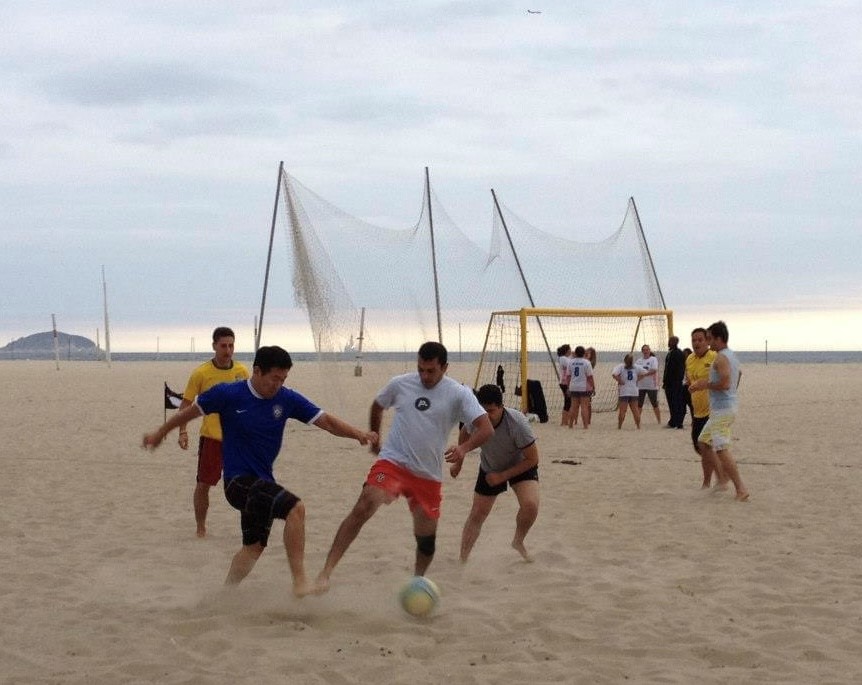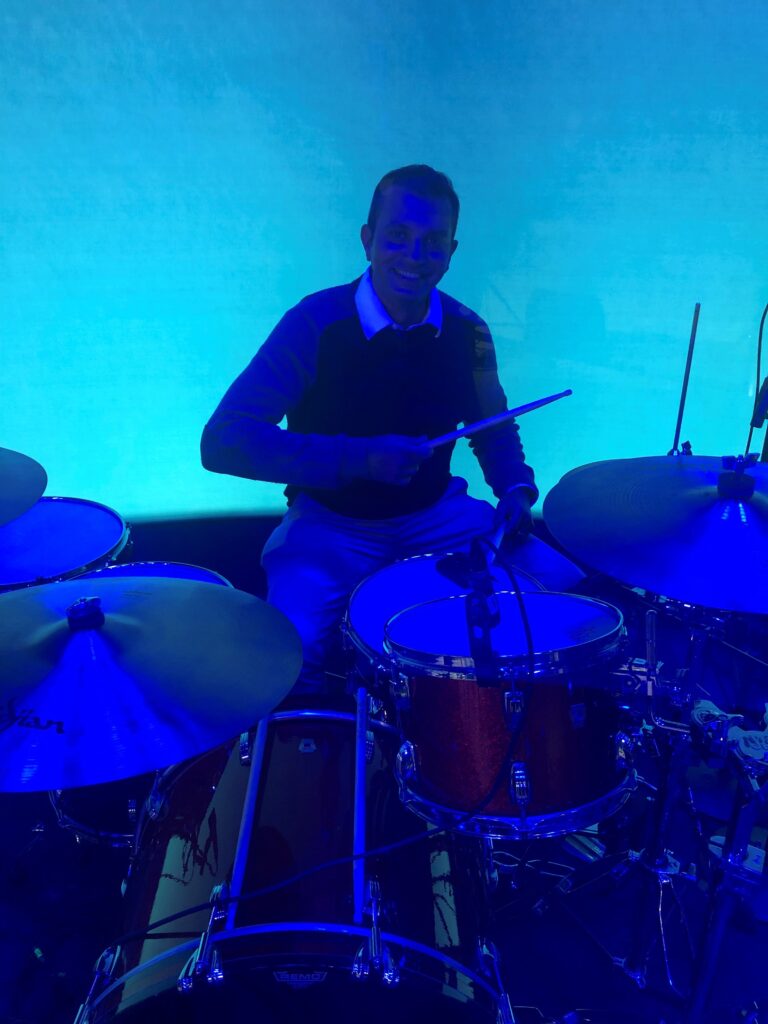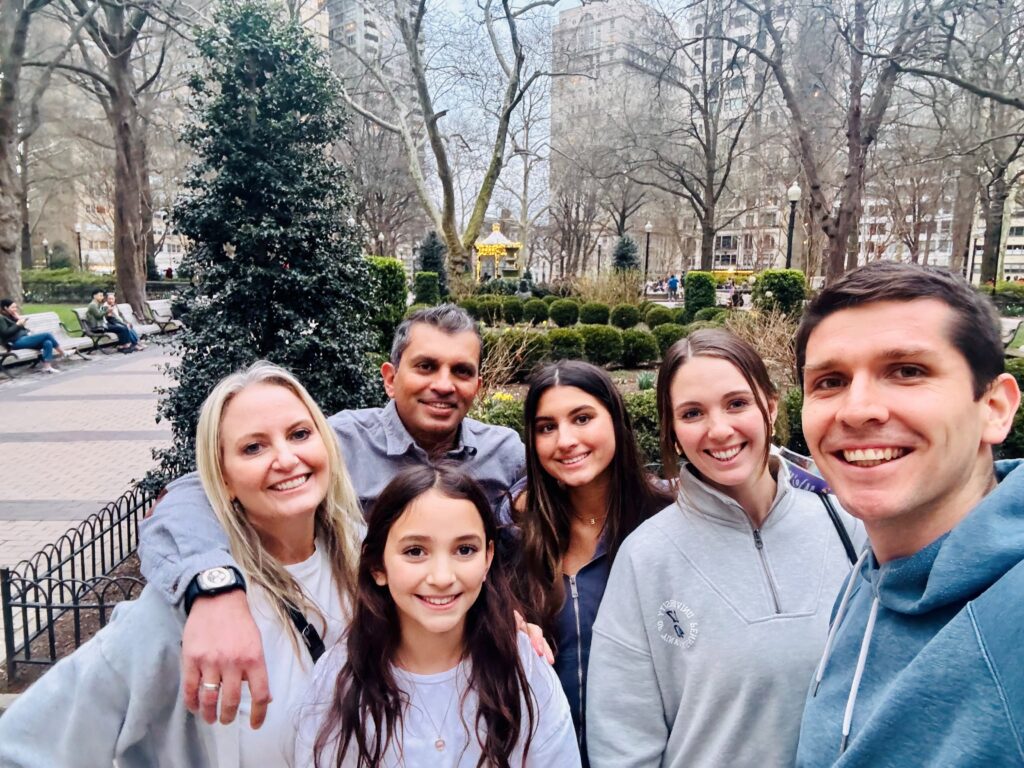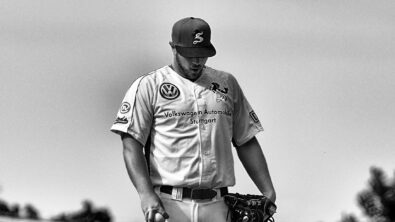Tosh Tambe

Tosh Tambe is among those driving the SaaS transformation at Siemens Digital Industries Software. Progress toward this shift is apparent in even a cursory scan of the headlines. As Vice President of Business Transformation & SaaS Strategy, of course Tosh weighs in on the public SaaS discussion with occasional articles making the case for industrial software’s move to the cloud. Inside Siemens, he’s likely at least as well known for incorporating fun into his work to inform and engage employees on all things subscription-based, especially as the star and host of internal video series with titles like the Hot SaaS Challenge and Let’s Kick Some SaaS. He’s a natural in front of the camera, drawing on a brief stint as a TV actor in college. And his charisma made for a fun conversation here, which yes included how the cloud is a competitive advantage for industry but also covered everything from acting to professional soccer – both of which are precursors and likely contributors to his professional success.
Imagine you’re talking to a stadium packed with all DISW employees—more than 20,000 of us. What’s your one message to us regarding cloud and SaaS?
What I would say are three things in terms of our cloud and SaaS transformation and our story. First, I would say that it is critical to do this for our customers. As our customers’ daily activities change, we must ensure we are giving them software and solutions that meet their needs today and in the near future. To do that, we need to provide software that is competitive, connected, and real-time, because that is what their businesses are becoming — more connected, more real-time. We must ensure our software and what we offer to our customers are cutting-edge in terms of capabilities and experience.
The second thing I would say is that doing this transformation is going to be fun. We get to look at all the great stuff we already have in our portfolio and make changes. This is exciting from a technological standpoint because there are many remarkable things you can do using the latest technology. For example, cloud services, predictive and generative AI, and machine learning. The process of updating our software is exciting, as is learning new technologies. It is also fun because we are selling our software differently. It is a new learning process, but we were able to stand up there and say, “Hey, we’ve got something unique in the market.” We have massive differentiation with what we build, but we are also providing it to customers in a way that really makes it more meaningful and distinct from a competitor.
Third, I would say that it is a substantial change. A big change does not happen overnight; rather, it is a process. We need to be able to take measured risks in that process. We need to be agile. To make sure that everything we do is the right thing for us in the future, we need to really check everything we do and ask ourselves if it is the right thing to do. Is it aligned with what we see our business as being in the future? And if you think there is something we need to change, then let us change it. Let’s gather data, make educated decisions, test things and see what works and what does not, then adapt as we move forward. So, I would say those are the three main things. First, it is all to deliver great capabilities and experience for customers. Second, it is going to be an amazing ride doing this for everyone. And third, to do it well, we will have to get uncomfortable, take risks, and be agile and data-driven.
What does the world think of Siemens when it comes to software? What about Siemens software would surprise people?
In terms of awareness of our software, we can put our customers into two buckets. One bucket would be our existing customers, who already know at least one part of our portfolio, if not multiple parts. Some customers have come through one product, either technology we acquired or built. But previously, they may have been looking at us with a very narrow perspective. These customers know Siemens and have heard over the last three years about the transformation we are working through. These customers have some idea of what is going on with SaaS and what seamless software means. We need to do more to get them to really understand and appreciate what is happening and why it is valuable to them. However, I think they have started to get that. In fact, I would say over the last couple of years, they have started pulling us to move faster on SaaS.
The second bucket is our future and potential customers, who we need to look at as individuals and companies. We want to and can provide value to them, and we need to communicate that to them. Now, it is not that we have not done that. We have started talking about the Xcelerator brand in our portfolio value and in a lot of our brand marketing. Siemens has a remarkably high brand recall. When you test the market to see whether people associate terms like Xcelerator, digital threads, and digital twins with us, there is an extremely high association. That is promising, but we must engage more with those customers, especially when doing SaaS. This is because SaaS allows quick trials. You can reach out to customers who have not bought from us before. They are part of the supply chain of customers who buy from us. There is a bunch of stuff we can do in the ecosystem with that. If I had to grade us, I would say existing customers’ understanding of our SaaS is 8 out of 10, so there’s little room for us to do better. With our prospects, I would say we are 6 out of 10, so there is a lot more work to be done on that side.
Can you situate the cloud in a broader context and compare it to other big computing paradigm shifts, and what’s going to become of edge processing? Will the cloud eventually subsume everything?
What seem like huge shifts that come out of nowhere are typically not. It is the S curve of technology adoption that starts slow. The right innovation meets needs not met before, and that’s when momentum builds. It gets to a point where suddenly it becomes curved. You see the big swing up, and that is where it becomes more mainstream. That is when everyone says, ‘Hang on, this is the new wave.’ But it has been happening for a while. If you trace the steps back of these innovations, you see that it is more of a continuum. It is really a continuum of technological evolution and how people use technology. However, at these periods of time, enough people suddenly realize, yes, this is amazing. Now we are moving on to the amazing part of the cloud chapter of the story. I think this will be with us forever. Just like a bunch of stuff that happened in the mainframe and desktop waves, that technology is still part of what we use today; it is just in a different form. When people ask me if the cloud is a fad or a passing thing, my argument is that it is not like all the other stuff before because it never went away. The form evolves as technology progresses and as people’s needs evolve. Cloud technologies and value are being adopted rapidly now, so our solutions need to keep up with those trends. I do not foresee a future where cloud services will not be part of our technology stack. It will develop into something even better, and that will be the next wave, but it is just going to be on that continuum.
As we know, you are the host for the internal Hot SaaS Challenge and Let’s Kick Some SaaS video series to help educate and engage our own employees. Could you tell me a little bit about your TV acting experience from college and how that may have helped you today in your role?
It was the summer before I started my undergraduate engineering degree in India. What happened was that I had done theater for fun and was spinning in circles about where that was heading. One of my friends auditioned for a role as an extra for a series being filmed in the city where I lived. It also happens that my parents, especially my dad, come from the theater space, and he is a well-recognized playwright who has lots of friends in those groups. Anyway, I went to this TV thing with my friend, and the camera operator was a close friend of my dad. He was like, ‘Hey, what are you doing here?’ I say, ‘Oh, I’m with this guy.’ So cameraman says, ‘Why don’t you join me?’ I joined as an extra, and before you knew it, I was written in as one of the characters and shot it. It was only one season because they ran out of money. However, I was a kid, 20–21 years old, who got to be in a series because of some people I knew. The camera operator has been a friend of my father since I was a kid. He helped me be in front of the camera and frame a shot. He would call me in, and I would look at how we shot the scene. I learned how cameras work, so I understood them when I was young. I lost any inhibition or fear of being on camera and found that I enjoyed being able to emote and connect with the camera. Again, I did not have a booming Bollywood career after that, but it helped me with Siemens. We named the cameras for Let’s Kick Some SaaS and the Hot SaaS Challenge, and I often talk to them as if they were people.
I know that you played soccer for a little bit. You’ve lived many lives. Can you talk about that a little bit?
Yeah, I did. Of all the things I do poorly, I think the one thing I do well is jump into things shamelessly, like I have no concept. I walked into things thinking I could do stuff, and I have done that all my life. I played a lot of soccer growing up, and I used to be on the field all the time since I learned to walk. I was decent at soccer, but I never thought of it as anything more than a sport I played for fun. I played competitively in school and college.
When I was working at Autodesk’s European headquarters in Switzerland, one of my colleagues played soccer. He used to play on a second-division club locally, but we played pick-up games twice a week together. I joined pickup games that mostly people at work and close by played in. This guy, who I also used to work with, came up to me while I was on the field to ask if I would want to try out for his soccer club. I was like, ‘Sure, let’s do it.’ So, I showed up to their camp for tryouts, and they were looking for someone to play a particular position. I played striker but also attacking midfield. I was mainly an attacking player, but I was good at distributing the ball. However, they were looking for someone who could play in more attacking positions. They saw me play and asked if I wanted to play this season, so I said sure! I was on the second division team in Switzerland for two seasons. When I left, I could not keep playing because of my work. I also got a nasty injury towards the end of it, which made me rethink if I could keep up with the physical demands of playing at that level. I was rather good at playing, but I was not built to go further. After that, I did not play competitively at any level, but I played for fun in Portland, Oregon, for the local Italian association. The secondary club I played for in Switzerland was owned by an Italian guy, and many of the players were Italian immigrants or Italian Swiss. So, I ended up learning some Italian.
I live a little vicariously through my oldest daughter, who played soccer professionally in Chile. She is a talented soccer player who played on two professional first-division teams in Chile. We would stream her games on TV to watch her play.

Quick takes
If aliens showed up at your door, what would be the first item or place that you showed them or took them to?
I know exactly the answer to that question. One of my shameless explorations is music, so I would love to show them my music room, bedroom, or office, where my musical instruments are. I would love for them to experience music. Music is, to me, such a human thing and such a unique experience. I wonder what that experience would be for them, because to me, it is a deep core right of being. I love music. I listen to a lot of music. I play the drums and some guitar. I am not great at it, but I enjoy it, and it is part of that experience.

What’s your favorite music genre?
I love everything. I love alternative music. I love indie. I love artists that are pushing the genre a little bit. I love rock, but maybe more alternative rock. There is a band that I love of late called Royal Blood. Super talented duo with a signature driving tempo style.
If you could change the ending of any show, what would it be?
Oh genius. I would have changed the endings of Breaking Bad and Game of Thrones. Walter White would have lived on forever. My ending would have been something like, he shows up in Bolivia 20 years down the road. There is a lot of chaos that happens, and then there’s just these last two minutes of him sitting there in, say, the Cayman Islands 20 years out. He is like an older Walter White, alive somewhere, and we do not know what happened in between. For Game of Thrones, I do not even know what to say to change the ending because it dragged out for me.
Do you create what you build or build what you create?
I think you build what you create. You create first. Creation happens in your mind and does not happen from scratch anyway. I do not believe anyone invents anything. I feel like people see things differently, and everyone has all these years of experience in their lives. It makes each individual look at the same thing differently, and so two people stare at the same thing differently. One can connect things in a way that another cannot, and that’s how creation and invention happen, in my view. So, inspiration occurs first, and then once you have a sense of what that is, it is that aha moment, right? It is Eureka or whatever. Then you must figure out how to build it. That is how I think about it.
If you could only eat one type of food for a year—breakfast, lunch, or dinner—what would you choose?
Breakfast, but more like brunch. On the weekends, I would have brunch with a mimosa. But if I am on vacation, I would do an 11:00 o’clock old-fashioned.



